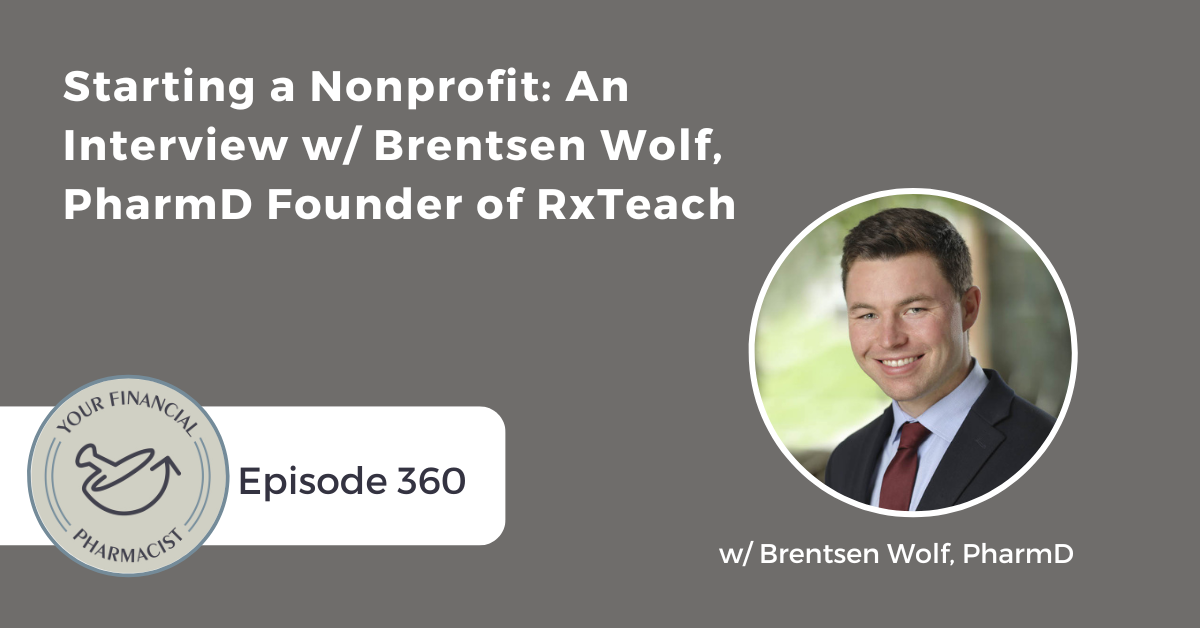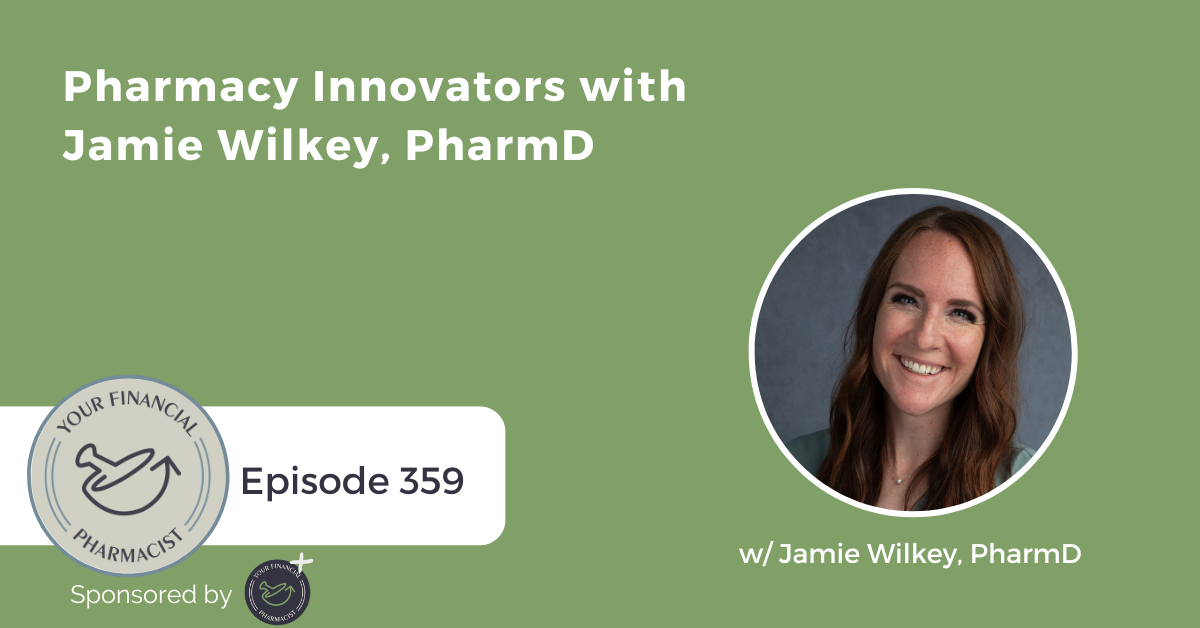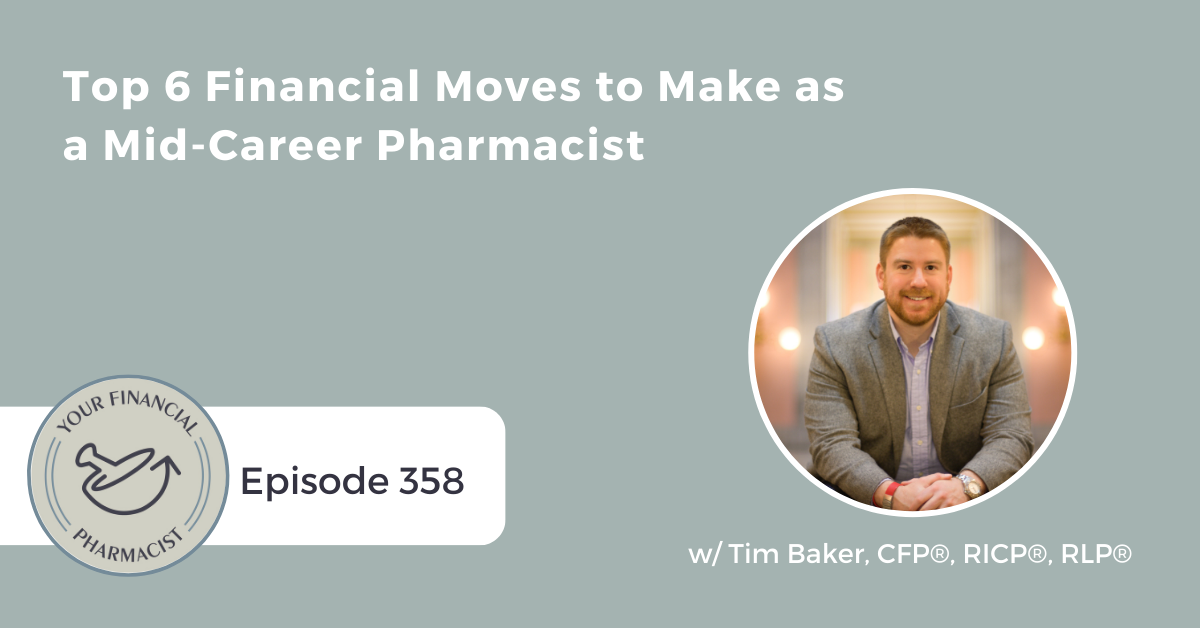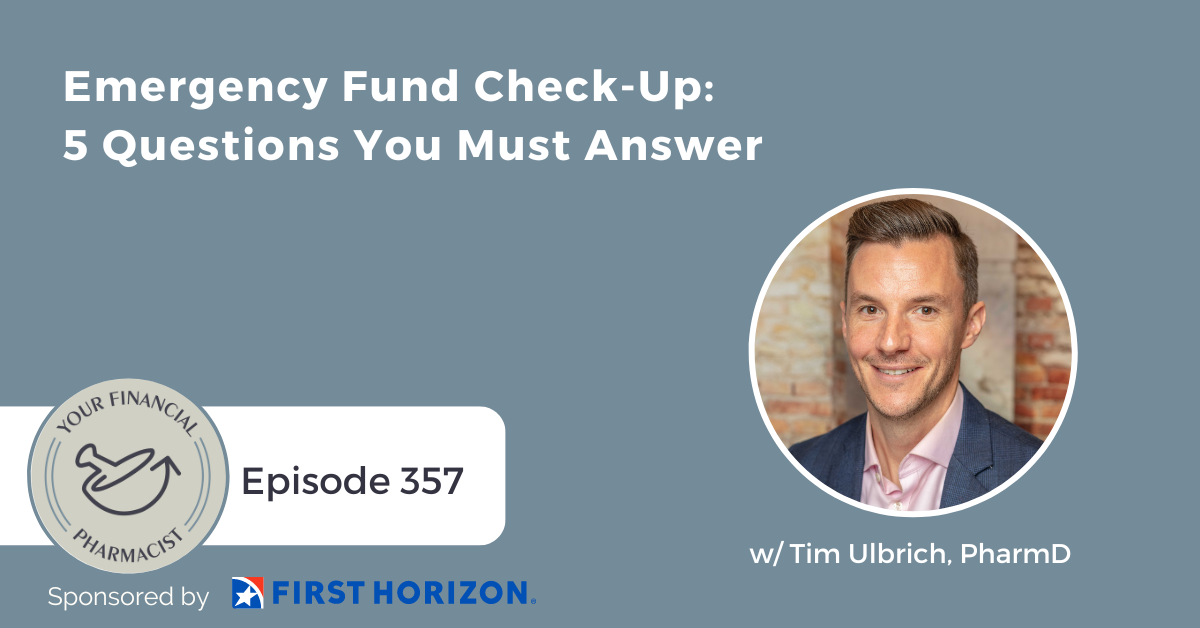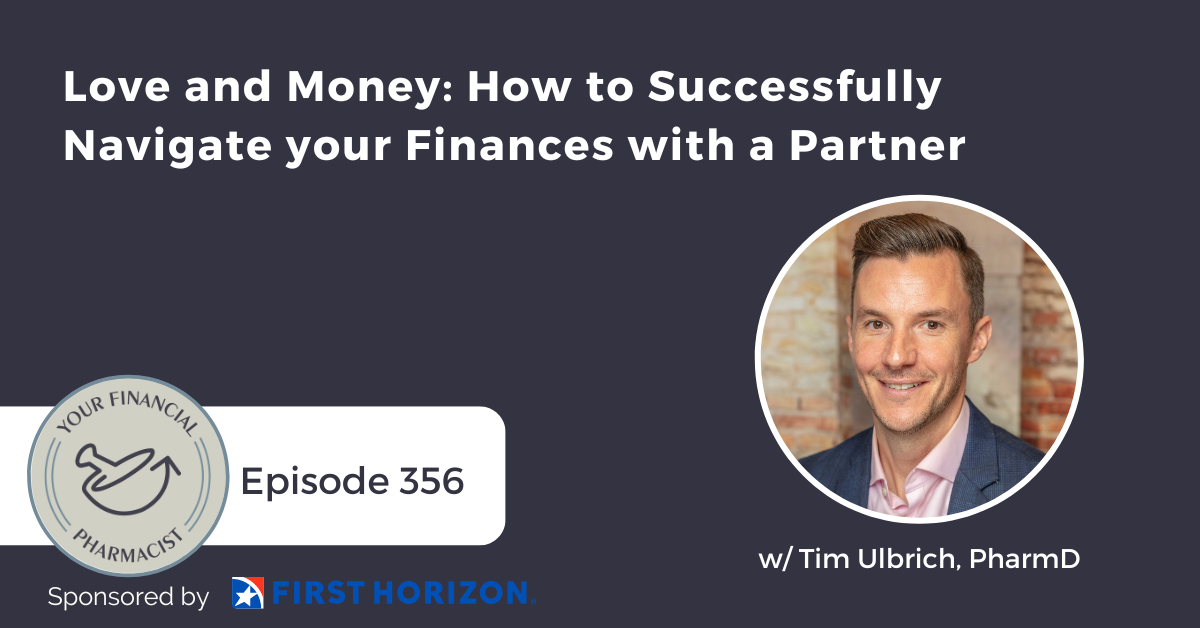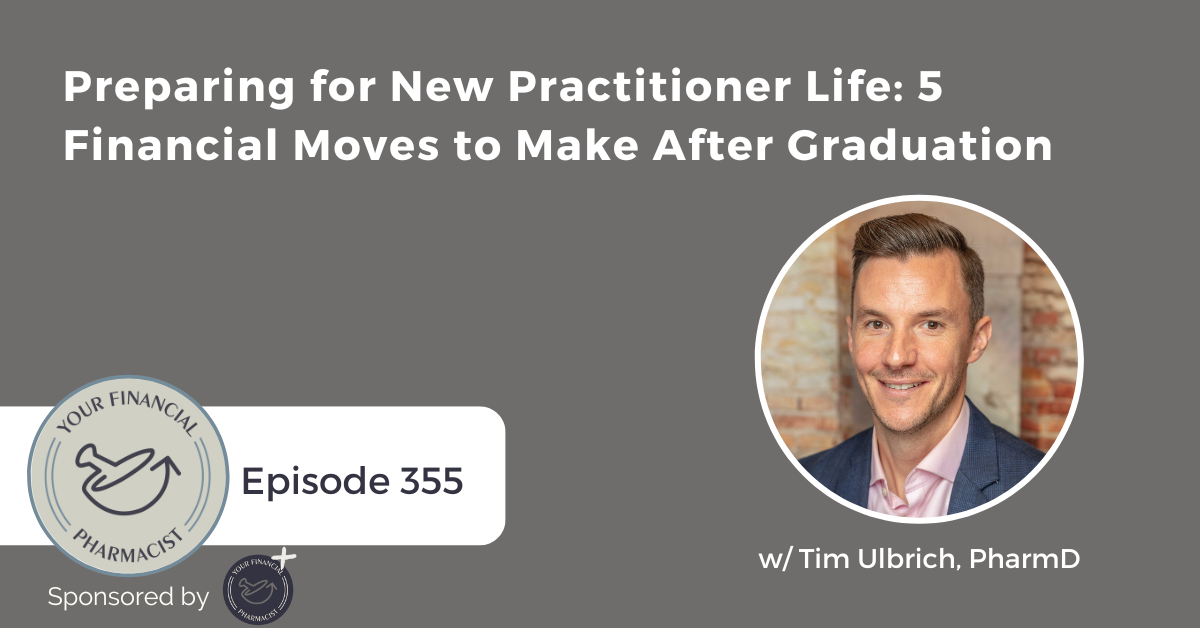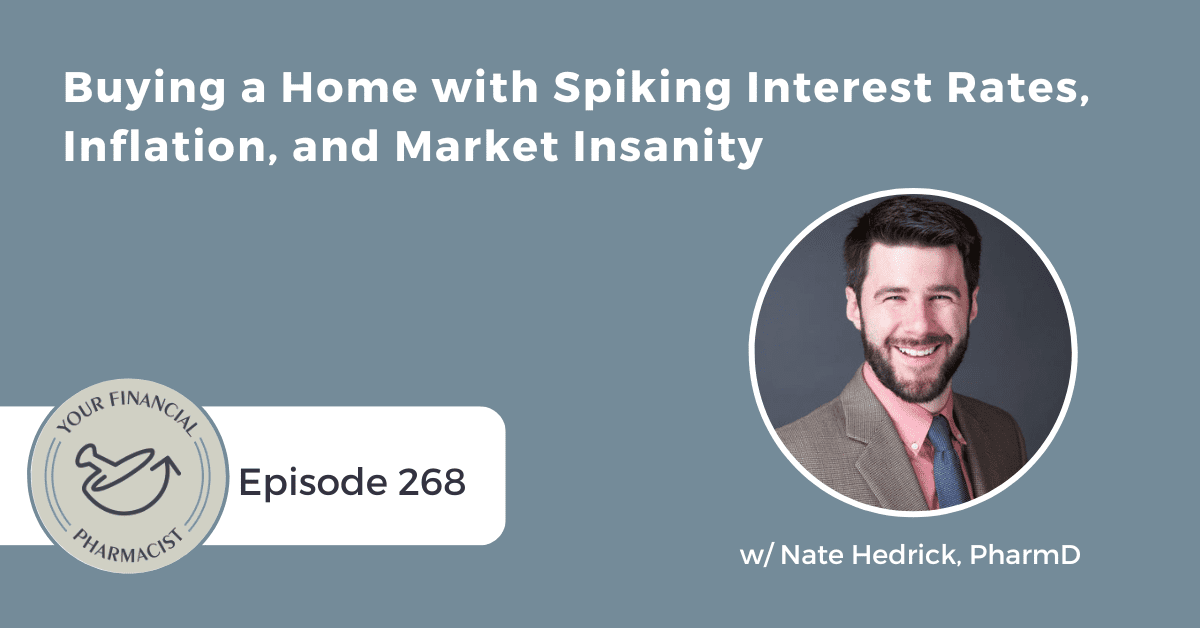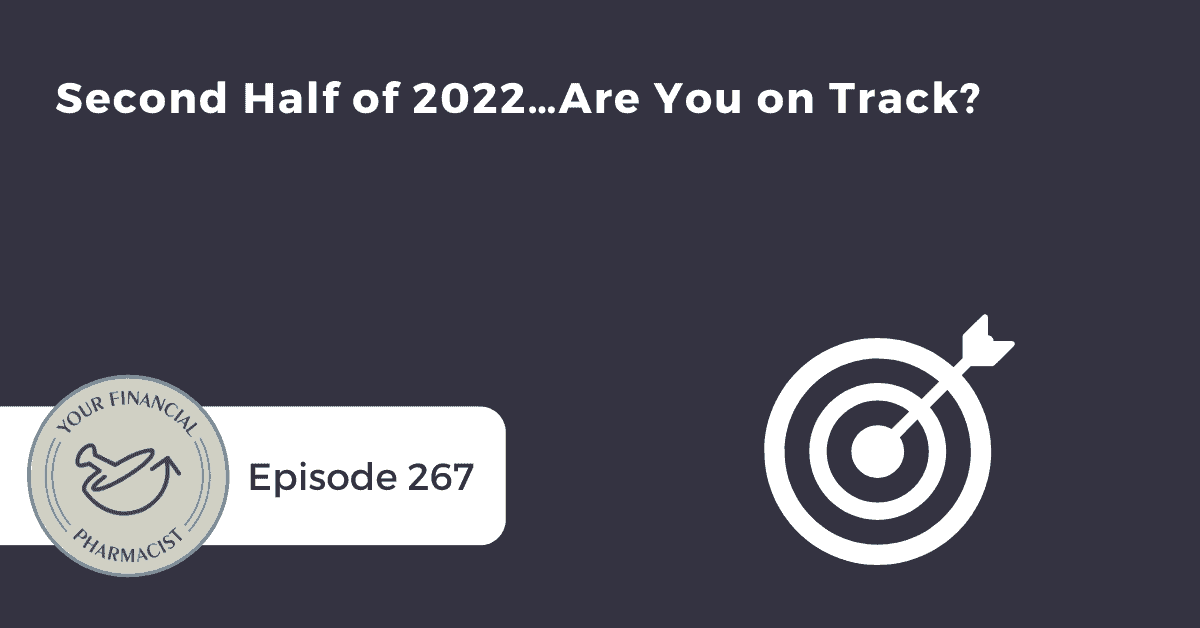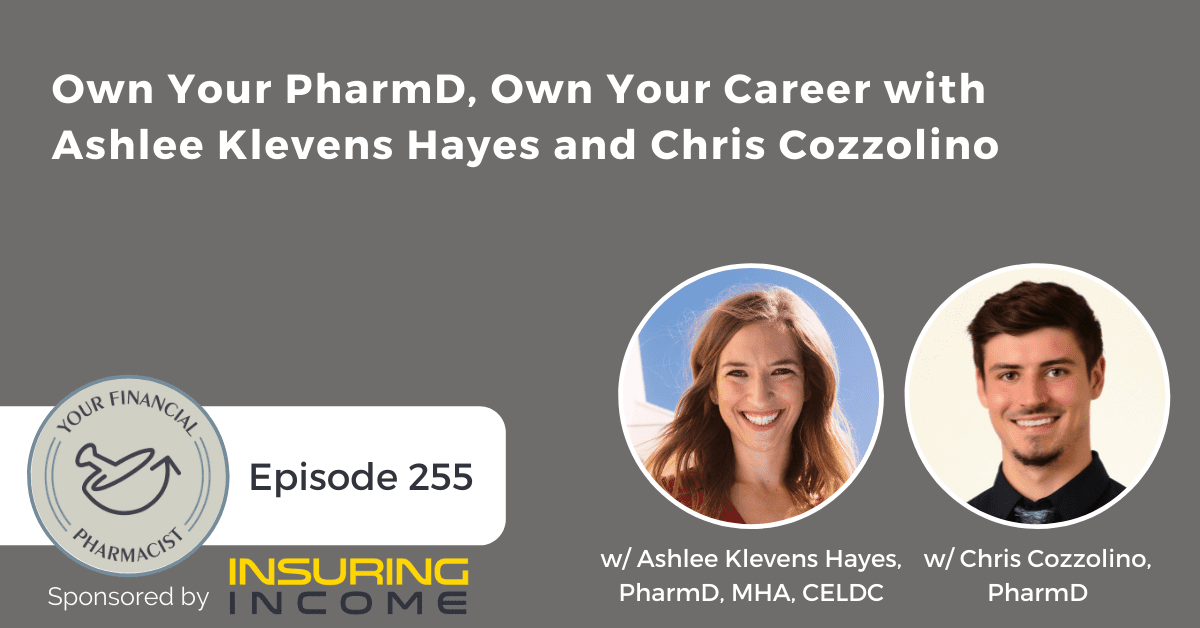Tony Umholtz, Senior Vice President of Mortgage Banking at First Horizon, returns to discuss four questions prospective home buyers should consider. This episode is brought to you by First Horizon.
Episode Summary
Tony Umholtz, Senior Vice President of Mortgage Banking at First Horizon returns to discuss four questions that prospective home buyers must answer including buy now versus wait, rules of thumb lenders are using to determine lending limits, the potential impact of the recent settlement from the National Association of Realtors, and the current state of how student loan payments are being factored into the lending calculations.
About Today’s Guest
Tony Umholtz is the Senior VP of Mortgage Banking at First Horizon. He graduated Cum Laude from the University of South Florida with a B.S. in Finance from the Muma College of Business. He then went on to complete his MBA. While at USF, Tony was part of the inaugural football team in 1997. He earned both Academic and AP All-American Honors during his collegiate career. After college, Tony had the opportunity to sign contracts with several NFL teams including the Tennessee Titans, New York Giants, and the New England Patriots. Being active in the community is also important to Tony. He has served or serves as a board member for several charitable and non-profit organizations including board member for the Salvation Army, FCA Tampa Bay, and the USF National Alumni Association. Having orchestrated over $1.1 billion in lending volume during his career, Tony has consistently been ranked as one of the top mortgage loan officers in the industry by the Scotsman’s Guide, Mortgage Executive magazine, and Mortgage Originator magazine.
Key Points from the Episode
- Housing market trends and timely questions for homebuyers with expert insights. [0:00]
- Housing market trends, including shifts towards a buyer’s market with more inventory and lower interest rates. [4:10]
- Home purchase decision-making, lending rules, and interest rates. [9:56]
- Real estate industry changes and their impact on homebuyers. [14:18]
- Real estate industry disruption, student loan debt, and lender perspectives. [20:46]
- Student loan repayment options and their impact on debt-to-income ratio, with a focus on income-driven repayment [25:04]
- Mortgage options for pharmacists with 3-5% down payment. [30:21]
Episode Highlights
“We’re seeing we’re seeing more inventory, more availability for buyers, that wasn’t there in the past. And I think that’s part of normalization. We’re still not completely normal. But we are getting closer.” – Tony Umholtz [4:07]
“I’ve always believed in 22 years in this industry, if someone’s going to be in an area for five years or more, when you look at the alternative of renting versus owning, I think it makes sense to own no matter what the environment. Rents go up over time. You don’t build equity. But with buying, you’re going to come out ahead in five years even if values are zero appreciation, right? You’re going to benefit by owning that home even if there’s no appreciation.” Tony Umholtz [6:55]
“Looking at the housing market, and maybe outside of COVID, it’s always kind of been better to buy a home when the markets are down. When everyone’s buying, then you’re competing with everyone and you just don’t get as good of a deal. I looked at that in my own life – when I buy, it seems like when things were slower in the market; I always did better versus when everyone’s looking.” – Tony Umholtz [11:20]
Links Mentioned in Today’s Episode
- First Horizon Pharmacist Home Loan
- YFP Podcast 348:2024 Housing Market Trends, Buy Now vs. Wait, & Assumable Rate Mortgages
- YFP Podcast 353: Avoiding the Trap of House Poor: Evaluating Cost of Home Ownership
- Tony Umholtz
- First Horizon
- Tony Umholtz on LinkedIn
- Tony Umholtz on Instagram
- Subscribe to the YFP Newsletter
- YFP Planning: Fee-Only Financial Planning for Pharmacists
- YFP Disclaimer
- Tim Ulbrich on LinkedIn
Episode Transcript
Tim Ulbrich 00:00
Hey everybody, Tim Ulbrich here and thank you for listening to the YFP Podcast where each week we strive to inspire and encourage you on your path towards achieving financial freedom. This week I welcome Tony Umholtz back on to the show as Senior Vice President of Mortgage Banking at First Horizon. On today’s show, we discuss four timely questions that prospective homebuyers must answer, including whether to buy now versus wait, rules of thumb that lenders are using to determine the lending limits, the potential impact of the recent settlement from the National Association of Realtors, and the current state of how student loan payments are being factored into the lending calculations. If you’re in the market to buy a home in 2024, we’ve got a good one for you this week. All right, let’s hear from today’s sponsor First Horizon, and then we’ll jump into the show.
Tim Ulbrich 00:48
Does saving 20% for a down payment on a home feel like an uphill battle? It’s no secret that pharmacists have a lot of competing financial priorities, including high student loan debt, meaning that saving 20% for a down payment on a home may take years. For several years now we’ve been partnering with First Horizon who offers a professional home loan option AKA a doctor or pharmacist loan that requires a 3% downpayment for single family home or townhome for first time homebuyers, has no PMI and offers a 30 year fixed rate mortgage on home loans up to $766,550 in most areas. The pharmacist home loan is available in all states except Alaska and Hawaii, and can be used to purchase condos as well, however, rates may be higher and a condo review has to be completed. While I’ve personally worked with First Horizon before and had a great experience with Tony and his team, don’t just take it from me. Here’s what Payton from Tyler, Texas had to say about his experience with First Horizon: “Aaron, Cindy and Marilyn were very easy to work with. As a first- time homebuyer, I shopped around for lenders at the onset of the process. Aaron was always very quick to reply and provide me with any details I requested in order to move forward in my decision to select a lender. Once I selected First Horizon, Marilyn and Cindy did a great job of keeping my wife and I informed of the process. Closing was a breeze yesterday at the title office and I sincerely appreciate the team going above and beyond to keep my interest rate locked, despite extending closing due to negotiations with the seller. I’ve already shared my positive experience with many pharmacist-only groups. And I look forward to my brother, also a pharmacist, refinancing with you guys when he decides to do so. To check out the requirements for First Horizon’s pharmacists home loan and to start the pre- approval process, visit yourfinancialpharmacist.com/home-loan again, that’s yourfinancialpharmacist.com/home-loan.
Tim Ulbrich 00:48
Tony, welcome back to the show.
Tony Umholtz 02:43
Hey, Tim, good to see you. Thanks for having me.
Tim Ulbrich 02:46
Always appreciate having your perspective and expertise to bring to our listeners that are potentially in the in the market for buying a house and we had you last on the podcast earlier in the spring episode 348. We discussed 2024 housing market trends. Today we’re going to continue that discussion knowing that this market is fluid, shifting, moving rapidly. And specifically we’re gonna talk about four timely questions that we think homebuyers must answer. But before we get into that, Tony, what’s the latest that you’re seeing in terms of trends out there in the market at the time of recording this end of May 2024? I know you mentioned to me before we hit record some interesting trends on inventory, maybe some levels building in certain markets, what would love to hear your perspective?
Tony Umholtz 03:30
Sure, sure. So times have changed a bit. If we look back from two years ago till now, you know, this these interest rates, the Fed has been on this mission to to quiet inflation, right? We gotta gotta get inflation down. It’s been a very tough environment for when it comes to inflation the last couple of years. And the good news is, is starting, we’re starting to see some things happen. And one thing that’s been building in different parts of the country now every part of the country can vary. But in Tampa Bay, for example, in Florida, we’ve seen a lot of inventory growth a lot of other parts of the country have too – Austin, Texas, I know is building inventory. So we’re seeing we’re seeing more inventory, more availability for buyers, that wasn’t there in the past. And I think, you know, that’s part of a normalization. We’re still not completely normal. But we are getting closer. So we’re getting closer.
Tim Ulbrich 04:25
Yeah, I feel it feels like there’s some slight shifts happening to be more buyer friendly. You know, we were just talking before the episode, you shared a story from your team of some negotiations happening where, you know, there were some concessions and things from a seller that maybe we wouldn’t have saw, you know, six months ago or 12 months ago and again, to your point every market is different. We need more inventory here in Columbus, Ohio for sure, there’s a lot of demand so everyone’s market is different, but it does feel like we’re starting to see some shifts where you know the the markets becoming a little bit more friendly to the buyer. I know for those that are searching, it probably does not feel like that right now. But, you know, be patient and we’re obviously anxiously waiting to see what happens with interest rates as well.
Tony Umholtz 05:08
Yes, I’m definitely seeing a shift, it’s becoming much more of a buyers market. Repairs are being, you know, concessions are being made or, you know, like we had talked about the sellers are willing to do some of this work to the home where they weren’t before when, when these inspections come back, and there’s little things, they’re willing to make those those those repairs now where they weren’t in the past. So some definitely some positive trends for buyers.
Tim Ulbrich 05:34
So again, we’re gonna talk through four timely questions that homebuyers must answer. Again, we’re recording here at the end of May 2024. So Tony, question number one, I think one that many people are waiting and thinking about is, you know, should I buy now? Should I wait until interest rates drop? We discussed that in a previous episode. I think this provides an interesting question because supply and demand, when rates come down, in theory, when I’m more people that are into the market searching for home, we did see rates tick down a little bit here in the last week. So what what are your thoughts on some of the trends that are happening around interest rates? And this decision of hey, buy now versus wait?
Tony Umholtz 06:11
Yeah, there’s a lot that goes into that, Tim, is a great, great question. I think, you know, the first thing we would want to talk about is, everyone’s situation is different, right? I’ve always believed in 22 years in this industry, like if someone’s going to be in an area for five years or more, when you look at the alternative, renting, right, versus owning, I think it makes sense to own if you’re in a five year span, no matter what the environment, right? I think it because it just rents go up over time, right? You don’t build equity, even if value stayed the same, you’re going to come out ahead and five years if values are zero, right? Zero appreciation, right? So you’re going to benefit by by owning that home, even if there’s no appreciation. So I think that’d be the first thing I’d say, like it’s up to the individual. But if you’re renting and that’s the alternative, and you’re gonna see escalating rents, because rents are still going up every year, I think, I think owning is the way to go. As far as like timing the market, which is always hard to do, there’s pros and cons right now. I think inventory is building is becoming more favorable, like we discussed, interest rates have come down slightly, you know, with interest rates, I’ll give you give you guys my thoughts on this. And again, I you know, this is just all these multiple sources that I monitor. And, and, you know, there’s some, there’s a couple of different thoughts here. So number one, we’re starting to see different consumers, different spectrums really being affected. Those in the lower income earners, it’s really starting to, you’re seeing credit card debt multiply, interest rates on credit card debt has gone up, there’s a segment of the population that’s really struggling, really struggling financially. We’re starting to see more defaults on car payments, not as much on mortgages, but on car payments, we are in some other different retail items. So that tells you that that could drag on the economy. So that’s one end of the spectrum. The other the other end of the spectrum is, we have a lot of people like baby boomers, for example, no debt, right. So they’re not dealing with any credit cards, their incomes slightly rising. We have financial markets have gone up. Stock bond market has risen. We’ve got high yields on CDs and treasury bonds. So they’re able to spend and they’re spending a lot, right. So we’ve got one segment of population doing really well and another not. So it’s just how long is that going to drag on the economy, and we’re seeing businesses start pulling back a little bit. So that being said, that’s all things that line up with interest rates falling, it really does, because we are seeing this gradual slowdown. Rates came down the past two weeks, because we got some got a really pretty bad number on retail sales. And those things kind of are showing the slowdown. That being said, commodity prices are going up. And what does that tell us, Tim? That tells us that that’s an inflationary sign, right? So it’s a mixed bag right now, it’s hard to say rates are gonna go straight down. It’s really tough. So I wouldn’t say we can’t completely bank on lower rates. We definitely are slowing and there’s probably an outlook that rates could be lower in the future. But we don’t always know for sure, right? There is some signal saying higher rates could be, this could be the new normal for a while. So when we’re making a home buying decision, we wouldn’t want to just say hey, rates are going to be lower in a year. That’s my buying. It’s got to say does this fit my lifestyle now? Is my alternative renting, you know, if I’m living rent free with family, and it’s not a problem to be in the you know, living with family, might be okay, but if you’re renting, and you know, you’re going to be in that area for more than five years, that’s where I think buying makes sense no matter what the market is.
Tim Ulbrich 09:55
Yeah, I’m glad you said that, Tony, because I feel like when there’s so much news coming at us as there has been with market conditions rates, will they drop? When will they drop inflation, etc, we tend to run the risk of getting down these rabbit holes that drive our decision making. And they’re important information we’ve got to consider. But we got to step back and look at the bigger picture. Where does the home purchase fit within the context of the rest of the financial plan? And if we think about this as a decision tree, from there, yes or no? Okay, how are the market conditions impacting our ability to buy a home? And what does that do in terms of purchase price, financing options, all those things, and sometimes we work bottom up, when we really need to start with those bigger questions.
Tony Umholtz 10:37
I have one more thing I’ll add just it just kind of piggyback’s on Warren Buffett, right. And, you know, you want to go against the grain on investments and in life. And a lot of ways, you know, he I think is his quote was, “I buy when there’s blood in the streets,” is when he buys stocks, right? When things were really bad. And, you know, when there’s euphoria he sells. So you kind of look at the housing market, and I’ve looked at that over the years, and maybe outside of COVID, just just what happened in COVID. It’s always kind of been when the markets down, it’s kind of a down year, I think it’s always been a better time to buy historically, in real estate too you know, when everyone’s buying, then you’re competing with everyone is just don’t get as good of a deal. So I just kind of looked at that in my own life, when I buy it seems like when things were slower in the market, I always did better, you know, versus when everyone’s looking.
Tim Ulbrich 11:32
Yeah, and I have a feeling time will tell, but I have a feeling. you know, maybe this time next year, maybe sooner, maybe a little bit later, we’re you and I are gonna be talking about, you know, an important topic around refinancing that we haven’t talked about in a long time on the show, because it just hasn’t made a whole lot of sense. So you know, what more to come in in the future. But if obviously, if we see rates drop, there’s going to be a big interest in the market out there from from a refinance perspective. Great stuff. Okay. So that was the first question, is it worth waiting to buy until interest rates drop? So by now versus wait? Second question is around some of the rules of thumb that lenders are using from a pre approval process and determining the amount of home that one can afford, one can purchase and Tony just given the rise in home prices, given the rise in interest rates, obviously driving up monthly payments, you know, pharmacist incomes have gone up, but they haven’t gone up that much. And so I have a feeling that, you know, we’re seeing the impact of home prices, and interest rates have an impact on their debt to income ratios, which are important from a lending perspective. So what are the rules of thumb? Is the 28-36 rule still relevant? What are lenders using now?
Tony Umholtz 12:41
You know, it’s it is irrelevant to some degree. But actually, the back end ratio, the 36%, is actually 43%. So, it depends on the product too. So like the product, you know, with less than 20% down, you’re typically going to have to stay at that 43% threshold. So that means your total debts, new mortgage included, car payments, student loans, the total debts cannot be more than 43% of your gross income. So it’s important remember, it’s gross income, it’s not net income, okay. So if you’re earnings of $10,000 a month, gross, your total obligations per month can be $4300. Okay, simple, simple math there. Now, if you’re going to bring more money to the table, like 20%, down, you can often get approved higher, so up to 49%, maybe even 50% in some cases. FHA loans, we can get even higher, sometimes it’s interesting. So, but those are different LTVs, typically more larger down payments are gonna give you more flexibility on the on the debt to income ratio. And that’s what again, that’s what we are approving you for as a lender and it with the lending community can approve you for that doesn’t necessarily mean it’s the right thing for me.
Tim Ulbrich 13:56
Yeah, great, great point. And so we’ve seen that kind of bump up in over time. And again, to your point, every product is different. So so no general rule of thumb. But the example there’s a good one, right? Remember, it’s gross income. So if someone’s earning $10,000 per year, you mentioned that that 36, shifting to 43. So that would be all debts $4300, right or less of the 10,000. Now, just to add on to that a little bit in this market, Tony and I’m specifically thinking of existing homeowners that are looking to move or make a purchase that are trying to get themselves in a position where maybe they don’t have to make a contingent offer, right? So hey, can I get a second loan, you know, even if they’re not going to carry that loan for a long period of time, but wanting to be able to make an offer on a home without a contingency on the sale of their current home. Just talk to us about how that impacts in that point, you then would have two mortgages, right that are going into that 43% equation.
Tony Umholtz 14:48
That’s right. So any liabilities you add, so like for example, what’s popular is a home equity line of credit. If you still own your home and you’re trying to buy a new home without selling your current home. Well, that home equity line of credit has to be counted in your debt to income ratio going forward. And it’s a popular strategy. It’s almost like a bridge loan. We have some clients that are trying to do a few repairs to their home, but want to buy this other house. And they they need to bridge that equity over for the down payment. Now, that new home equity line, for example, would count in their debt to income ratio or cash out refinance. We do cash out refinances as well, where because those rates are lower than home equity lines generally. And let’s say we pull $100,000 out that new mortgage payment would be calculated, and your debt to income ratio, so any new loans you take are calculated, and your debt to income ratio.
Tim Ulbrich 15:39
Awesome. Great stuff there. So third question, I want to talk a little bit about maybe somewhat nebulous, NAR settlement and what’s going on there, and probably more questions, and maybe we have answers at this point in time. And we had Nate Hedrick on the show early in April. Nate’s a pharmacist, real estate agent, Episode 353, we’ll link to that in the show notes, to talk about his perspective as an agent on the NAR settlement. So we don’t necessarily need to go into all of the details on the settlement, as we’ve discussed that before. But Tony would love to get your perspective as a mortgage officer, what what exactly is going on here with the settlement? And how may this impact or not impact those that are currently or soon to be in the market as a homebuyer?
Tony Umholtz 16:22
It’s, you know, it’s a moving target to some degree. It’s, you know, from, from our perspective, as lenders, I know, any other thing I just like to address -we don’t know all the details yet. And I think we have to look at the different regional MLS’s too. I think there could be some regional impacts and ways of doing business that could could change, it may not be a universal thing is what I’m saying. Different areas may adopt different rules. But just in my communications with with real estate agents that we’ve worked with. And, you know, clearly the big thing is going to be, I think it’s going to narrow the amount of realtors that are out there. I think to some degree, I think the more established agents will be still be in the markets and still do well and probably will do better. For a lot of the newer agents that may not have as big of a following or book business may not make it, right. My concern too, is there are going to be some areas where the buyers may not be able to afford to pay the buyer’s agents. So I think I think what it’s going to do is it’s going to professionalize a lot of things. I think, buyers. First of all, I want to say this, I’ve worked with real estate agents for over 20 years. And they some of them work extremely hard. It’s a very tough occupation, when you talk about driving people to maybe 20 houses, negotiations. I mean, even this weekend, I had an agent call us and they were making an offer on a really competitive house, this one was priced really well to sell. And like, you know, they’re still going up against multiple offers, they’ve been working with these buyers for months. I mean, it’s it’s a challenging occupation. And this doesn’t make it any easier to some degree. But I think having a buyer’s agreement with that agent, so when you select an agent that can help you, because there’s a lot of value add that agents bring, you know, just in my view, we all have the internet, we all can search for properties. But when we’re new to an area, we don’t know everything about the neighborhoods, we don’t know the history of the neighborhoods, the history of that area. Was it built on an old Waste Management facility? I mean, there’s so much that goes into this, what kind of schools are here? What’s the history of these schools? What’s, what’s the history of this part of town? Is this area going to appreciate? Is it a growing part of town? Or is it a time, there’s so many aspects that agents do bring value? So I think, getting off on a tangent, but I guess what I’m getting at here is you want people to be served have the ability to be served by agents, right. And you don’t want to eliminate that. So they’re all going to have to sign some sort of buyer’s agreement. And there will be a commission involved. And that commission will either be paid by the buyer themselves directly or could still be negotiated with the seller. And I do think especially as we pivot into this buyer’s market, that more sellers are going to be willing to pay that. And it may not be advertised that way. But I think they’re going to be able to negotiate that in so the sellers, essentially still paying it. Yeah, but if the buyer does pay it out of their pocket, they’re probably still getting a little lower sales price. So in the end, I think the consumer is going to do fine, but it’s really not going to change a whole lot. I think it’s going to change how the business is done. And it may eliminate some of the agents in the industry is what I think could happen. The good news of all this is that Fannie Mae, Freddie Mac, right and HUD, basically came out said that if the seller does pay the buyer’s agent commission, it’s not going to impact the allowance for seller concessions. That means is on a on a conventional loan, if you’re putting 5% down and you can normally get 3% in sales concessions, right? That let’s say the buyer agents owed 3% in commission, the seller can still pay that and still pay your 3% concessions, closing costs and prepaids, which was is helpful, I think is a big deal. Because then we’re not having that challenge as well, buyers, because many people take advantage of that, to have their closing costs and prepaids paid. So that’s, that’s kind of where we are, I think we’ll know more by the end of the summer, and we can definitely dive in more. And that’s just kind of my high level, you know, perspective. I’m not an expert in this. But just, you know, that’s kind of what I think could happen. And I’m hopeful that this is a good thing for the industry. And it’s not not a negative thing.
Tim Ulbrich 20:45
Yeah, great summary. And I’m just really curious more than anything to see how this shakes out. You know, if you look at listings right now, it’s business as usual. You know, most listings that I see are in the Columbus area, you know, a list of 3%, two and a half percent, something like that. So that ability to list is something I think we’re going to see that change, and there certainly will be questions and some unknown territory, but how quickly will this evolve? How quickly will the disruption happen? Or not happen? You and I were talking a little bit before the recording about, you know, some of this shifting more on the front end. And having that agreement agreement with the buyer’s agent, especially for the first time homebuyers where that downpayment and coming with cash to the table for down payment closing costs, is so precious, right, that’s hard, hard to do. If there’s more cash that’s needed, from the buyer to pay the agent in a market or historically where that wasn’t happening, you know, I think that’s going to be an interesting trend to watch watch into the future. But what a lot of questions, you know, I think the example you gave is, was a really good one, have you know, an agent, understanding a local area, understanding the school’s understanding, maybe some of the things that aren’t going to be put on a listing, you know, such as, hey, this was built on an old facility and just going through this process a couple of times, especially if you’re coming from out of the area until you are in the area, living in it every day, where you are actually driving around experiencing it, living life like you normally would, you just can’t know that. You have to rely on, you know, other people that have expertise in the area. But I think it’s also worth saying there that not all agents are created equal from a value standpoint, you know. It’s no different than our industry, in the financial services, where the word financial planner doesn’t necessarily carry a whole lot of weight. As a consumer, you have to really do your homework to say, Hey, what are the credentials this person has? What is the experience? What is the value that they’re charging? Is there a return on investment? And I think, you know, one of the positives of this is really shifting, you know, that pressure, maybe some consolidation in the agent market, to really, you know, for agents to make that case, from a value standpoint. So curious to see what that looks like. Yeah,
Tony Umholtz 22:49
100% agree. It’s, it should professionalize a lot of the industry in a lot of ways.
Tim Ulbrich 22:57
My last question for you, Tony, I know a lot of our listeners are curious about this is related to student loans. You know, it’s it feels like we have to come back and talk about student loans at some point on every episode. Many of our listeners, of course, are facing, you know, significant amounts of student loan debt, especially, especially in that first decade or so of their career. And there’s just changes upon changes related to student loans that have been coming over the last year. And what one of them that’s coming to top of mind for me is with the with the new save repayment plan, that new calculation is going into effect this summer, which is going to have some benefits for most, not all because what’s interesting about that repayment plan is the monthly payment can exceed the standard repayment plan, which isn’t true with all of the other income driven repayment plans. But for most borrowers, I think because of the adjustments to that calculation, where the federal poverty limit multipliers going to be going up, and then the multiplier for graduate undergraduate loans might drive down the monthly payment a little bit as well. In theory, we’re gonna see many people that might have a lower monthly payment on that save plan. And so my question is, we just talked about debt to income ratio, how does that feed into what you’re seeing in terms of how lenders are looking at student loans and just the nuances and how quickly this is changing? And how that feeds into the calculation of what that amount of student loans impacts their overall debt load?
Tony Umholtz 24:27
Yeah, that’s a great question. And it’s, you know, as far as how lenders are viewing the student loans, there’s two two things that I would say are the main factors that we look at, right. So the so when, when a pharmacist or physician is getting out of school, they secure the first job and they have quite a bit of student loans. We see cases you know, across the board but hundreds to hundreds of 1000s of dollars sometimes the the there’s two ways and the main the the way, the best way and what we see the most is we just use the Income Based Repayment repayment number, right? So, a lot of times when we’ll run a credit report for someone that’s newly out of school, it’ll state that they owe all this balance, and there’s a zero payment, right? So because they haven’t started making payments, so when we run a credit bureau through Equifax, TransUnion, and Experian, it’ll come back that way, right, to saying zero is the payment amount. So that’s where these two different avenues go. So number one, if you get the Income Based Payment letter, so let’s say it’s $250,000, is still student loans. And that comes back at $800 a month income based repayment, or $500 a month, that’s what we’re going to use. So it’d be $500 a month on that letter, even though it’s not on the credit bureau. Now, if it’s in deferment, or you’re not repaying it right, then we’re going to use a factor. So in case the product we use for pharmacists is going to be a point 5% factor, okay. So in that case, you’d be looking at a $1250 payment versus $500. So $1250, because it’s half a percent per month, of the total $250. So your your ability, your buying capacity has narrowed if you don’t have that income based repayment. So because that factor is going to is going to provide a larger payment than then the income base. Now, that being said, that factors lower than like an FHA loan, or you know, some other products that are out there, we’re gonna use 1%. Right? Yeah. So so it’s still better than, you know, the other options, but it’s not as good as the income based. So my advice is, once you start working, and you’re on that payment plan, that’s what the lender is going to use, and make sure that they have that information that way they calculate it correctly, because the lenders may turn you down saying, Hey, you owe 250, saying zero, our factor’s 1%, it’s $2500 a month, you can’t qualify for anything. Yeah. So that’s the advice I’d give. I’ve seen that happen quite a bit over the years. So I just, you know, do your homework on what that that income base payment will be. And if it’s better than that factor, which a lot of times it is, that’s what I would, you know, use that to factor into your planning ahead of time.
Tim Ulbrich 27:18
Yeah, Tony, this is a great example, one of many where two parts of the financial plan come together, you know, we’re talking about student loan repayment. And obviously, there’s a whole set of strategy with that. And from a lending perspective, you’re buying a home, what that monthly payment is, and how that feeds into your debt to income ratio very relevant. And one of the common things we talked about is, you know, deferment. In my opinion deferment, there’s still some old advice out there from people that graduated back when I did have like, hey, defer your loans if you can defer your loans, especially during like a postgraduate training period. And the problem with that you’ve highlighted one here, is that for those individuals, that’s going to put us into that, you know, more of that de facto calculation, that most likely is going to be a higher number that contribute to the debt load. The other thing we often talk about is, especially for those that might qualify for something like public service loan forgiveness, deferment, doesn’t allow those to count as qualifying payments. And because the income driven repayment, as the name suggests, is using your income to come up with your monthly payment, even when you’re in a postgraduate training period with a thought might be, hey, I’ve got a lower income, therefore, I need to defer, that calculation might end up, you know, even if you have 150 $250,000, that you might actually have a very low monthly income driven repayment plan, which would be favorable here, but also be favorable, when it comes to something like loan forgiveness payments and those payments counting. So not advice, by any means. But certainly something to think about. And a good example, just have a how these pieces are very much interconnected.
Tony Umholtz 28:48
Absolutely.
Tim Ulbrich 28:49
Tony, if I could put you if I could put a fifth question in front of you, that actually was just thinking about as we’re recording, you know, knowing we’re in this higher interest rate market, I would suspect this is a time period where we’re seeing more ARM products out there that are being promoted. So ARMs, adjustable rate mortgage products, what what are your thoughts and kind of, you know, people looking at those where hey, maybe an ARM product as you’ve been promoted, you know, something, and if something like a 10 or 15 year ARM, even if it’s ammoritized over 30 years with the idea that hey, we’re gonna save a little bit of interest now, but there’s this question in the future. So, you know, when I refinance my home last in 2000, and somewhere around the pandemic, you know, 30 year conventional at high twos, low threes to no brainer, right? Obviously, we’re in a different interest rate market. So just quick thoughts on on kind of ARM products in this market.
Tony Umholtz 29:43
You know, it’s funny, the ARM products, especially right when the Fed took off with their interest rate, rising raises and ARMs had a pretty meaningful spread below the fixed rates. So the only area I see and I’ll give you the pros and cons of ARMs, the only area where I’m writing a good amount of arms are on jumbo mortgages right now, just because those jumbo fixed rates are still higher, more elevated than the ARMs, and it but it’s, it’s compressed a lot. So it used to be like a 1% spread maybe in early, mid 22 and an end of 22-23. It just kept doing this, you know why? Because the Fed kept increasing the short end of the yield curve, right. So that’s where we had this. That’s why we have an inverted yield curve. So what you don’t want to get into too much technicality, but like the two year treasury note today is actually higher than the 10 year and a 30. Year, right. So it’s inverted, short term rates are, are higher than the long term rates, which typically leads means rates are going to come down in the future, right? is typically what that means. But ARMs still makes sense on the higher end loans it possibly could on conventional loans, the only challenges with ARMs, they typically are considered riskier in the eyes of the lender, meaning we want more money down, right. We’re not going to do a three or 5%. The only product we have one product that’ll do 100% ARM for MDs only, MDs and DOs. But outside of that none of the products really make sense unless you put 20% down, so no one has 20% to put down the ARM could make sense. It used to make even more sense. But the yield curve has gotten pumped up so much. And frankly, the fixed rates have come down. The 30 year fixed is getting better on especially on conventional loans. FHA loans are incredibly – the spread on FHA loans are way down. I mean, I think the other day, I mean, I hadn’t seen them down in, you know, pretty far down in the sixes for FHA now, so there is PMI. But anyway, I guess what I’m getting at is, I think there’s better fixed rate options for most people right now, unless they’re higher end loans if that makes sense, but it’s a great question. The ARMs are definitely still viable for larger jumbo loans. And in most markets, that’s over $766.
Tim Ulbrich 32:09
So you answered my question, I say, hey, what do you define as a jumbo loan for folks that are listening, wondering, so awesome, thank you. Let’s wrap up by talking about the product that you offer at First Horizon for the pharmacist home loan. You know, I think many of our listeners we’ve talked about, hey, some of the challenges potentially of getting into that downpayment, obviously that downpayment amount of getting a conventional 20%, where home prices are today versus five years ago, that’s put further pressure on that, you know, cash for the downpayment. So talk to us about the pharmacist, pharmacist home loan through First Horizon, who it’s for maximum loan amounts, downpayment requirements, and that will point our listeners to more information from there.
Tony Umholtz 32:47
Sure, sure. So the again, the product has been it been a great option for many, and we’ve been really neat to see so many people benefit from it. And it allows if you’re a first time buyer, you can put as little as 3% down. And if you’ve purchased in the past, then or owned a home in the past, it would be 5% down, okay. No PMI. So there’s no mortgage insurance, that’s the real benefit. There’s no prepayment penalty either. So you can refinance in the next couple of years if we see rates dip, like we think could happen. There’s also a minimum credit score, it’s 700 to the minimum credit score hurdle is 700. And the maximum loan amount is $766,500. Is the maximum loan amount. So that’s a quick snapshot of it. And there’s not a hefty amount of reserve requirements. It’s a pretty user friendly loan for most, especially if you’re buying your first home. And we generally have, you know, 30 year fixed options under that product.
Tim Ulbrich 33:53
So for those that are listening, that are in a higher cost of living area, saying, Hey, I’d love to buy under $766. But I live on the West Coast, I live in the northeast, I live in, you know, the DC/Virginia area, you know, this doesn’t mean there’s not an opportunity to work with First Horizon, Tony mentioned the jumbo loans or other options available when you get to those higher loan amounts. And I think Tony’s we’ve talked about on previous shows a good lender is not going to put one solution towards everyone to take. For your individual solution, what is the best option? Is it the pharmacy some loan? Is it a FHA loan, you know, perhaps a VA loan or other products? So that lender relationship and really determining what the best fit is so important, and we’ve got more information available on the website. If you go to yourfinancialpharmacists.com/home-loan, you can learn more about the first horizon pharmacists home loan product, and from there, we can get you in contact with Tony and the team to learn more. So Tony, as always great stuff. Thanks so much for coming on the show.
Tony Umholtz 34:50
Hey, thanks for having me. Tim. Always great to be with you here.
Tim Ulbrich 34:52
Thank you. Have a good one.
Tony Umholtz 34:53
You too.
Tim Ulbrich 34:56
Before we wrap up today’s show, I want to again thank this week’s sponsor of Your Financial Pharmacist Podcast First Horizon,. We’re glad to have found a solution for pharmacists that are unable to save 20% for a down payment on a home. A lot of pharmacists and the YFP community have taken advantage of First Horizon’s pharmacist home loan, which requires a 3% downpayment for a single family home or townhome for first time homebuyers, and has no PMI on a 30 year fixed rate mortgage. To learn more about the requirements for First Horizon’s Pharmacist Home LLoan and to get started with the pre approval process, you can visit yourfinancialpharmacists.com/home-loan. Again, that’s yourfinancialpharmacists.com/home-loan.
Tim Ulbrich 35:41
As we conclude this week’s podcast and important reminder that the content on this show is provided to you for informational purposes only and is not intended to provide and should not be relied on for investment or any other advice. Information in the podcast and corresponding material should not be construed as a solicitation or offer to buy or sell any investment or related financial products. We urge listeners to consult with a financial advisor with respect to any investment. Furthermore, the information contained in our archived newsletters, blog posts and podcasts is not updated and may not be accurate at the time you listen to it on the podcast. Opinions and analyses expressed herein are solely those of your financial pharmacists unless otherwise noted, and constitute judgments as of the dates published. Such information may contain forward looking statements, which are not intended to be guarantees of future events. Actual results could differ materially from those anticipated in the forward-looking statements. For more information, please visit yourfinancialpharmacist.com/disclaimer. Thank you again for your support of the Your Financial Pharmacist podcast. Have a great rest of your week.
[END]
Current Student Loan Refinance Offers
Note: Referral fees from affiliate links in this table are sent to the non-profit YFP Gives. | Bonus | Starting Rates | About | YFP Gives accepts advertising compensation from companies that appear on this site, which impacts the location and order in which brands (and/or their products) are presented, and also impacts the score that is assigned to it. Company lists on this page DO NOT imply endorsement. We do not feature all providers on the market. |
$750* Loans ≥150K = $750* ≥50K-150k = $300 | Fixed: 4.89%+ APR (with autopay) | A marketplace that compares multiple lenders that are credit unions and local banks | ||
$500* Loans ≥50K = $500 | Variable: 4.99%+ (with autopay)* Fixed: 4.96%+ (with autopay)** Read rates and terms at SplashFinancial.com | Splash is a marketplace with loans available from an exclusive network of credit unions and banks as well as U-Fi, Laurenl Road, and PenFed |
Recent Posts
[pt_view id=”f651872qnv”]




